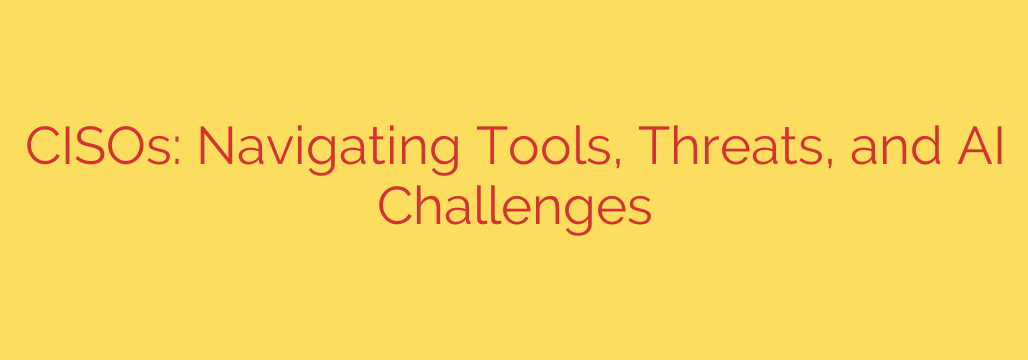
The Modern CISO’s Dilemma: Juggling Tools, Threats, and the AI Revolution
The role of the Chief Information Security Officer (CISO) has never been more demanding. Tasked with protecting an organization’s most critical assets, today’s CISOs operate at the intersection of technological complexity, evolving threats, and immense business pressure. Navigating this landscape requires a delicate balance of strategic leadership, technical expertise, and forward-thinking vision.
Three core challenges define the modern CISO’s agenda: managing an overwhelming number of security tools, defending against a dynamic threat landscape, and grappling with the dual nature of artificial intelligence.
Taming the Beast: The Problem with Security Tool Sprawl
Many security teams are drowning in a sea of technology. Over the years, organizations have adopted countless point solutions to address specific threats, leading to a phenomenon known as tool sprawl. While each tool may have been purchased with good intentions, the cumulative effect can be counterproductive.
This overload creates several critical problems:
- Alert Fatigue: Security operations centers (SOCs) are inundated with alerts from dozens of disconnected systems. This noise makes it incredibly difficult for analysts to identify genuine threats, leading to burnout and a higher risk of missed incidents.
- Integration Nightmares: Getting disparate tools to communicate effectively is a significant challenge. A lack of integration results in security gaps, manual processes, and an incomplete view of the organization’s security posture.
- Budgetary Strain and ROI: Justifying the cost of numerous overlapping tools to the board is a constant battle. CISOs must be able to demonstrate clear value and return on investment, which is nearly impossible when the security stack is fragmented and inefficient.
Actionable Advice: The path forward lies in strategic consolidation. CISOs should conduct a thorough audit of their existing tools, identifying redundancies and gaps. The goal is to move away from individual point solutions and toward integrated security platforms. A platform-based approach simplifies management, improves visibility, and allows for powerful automation, ultimately reducing costs and improving security outcomes.
Staying Ahead of a Dynamic Threat Landscape
The idea of a secure perimeter is a relic of the past. Today’s threats are sophisticated, persistent, and can originate from anywhere. CISOs are no longer just building walls; they are managing risk across a complex ecosystem of cloud services, remote workers, and interconnected third-party vendors.
Key threats dominating the landscape include:
- Sophisticated Ransomware: Ransomware attacks have evolved from simple encryption to multi-faceted extortion schemes involving data theft, public shaming, and threats to notify customers and partners.
- Advanced Phishing and Social Engineering: Attackers are using highly personalized and context-aware tactics to trick even savvy employees into compromising credentials or executing malicious code.
- Supply Chain Attacks: Targeting a single, less-secure vendor can provide attackers with a gateway to dozens of their high-value customers. This makes third-party risk management an absolute necessity.
Actionable Advice: A modern defense strategy must be built
Source: https://www.helpnetsecurity.com/2025/08/13/ciso-it-tool-sprawl/








